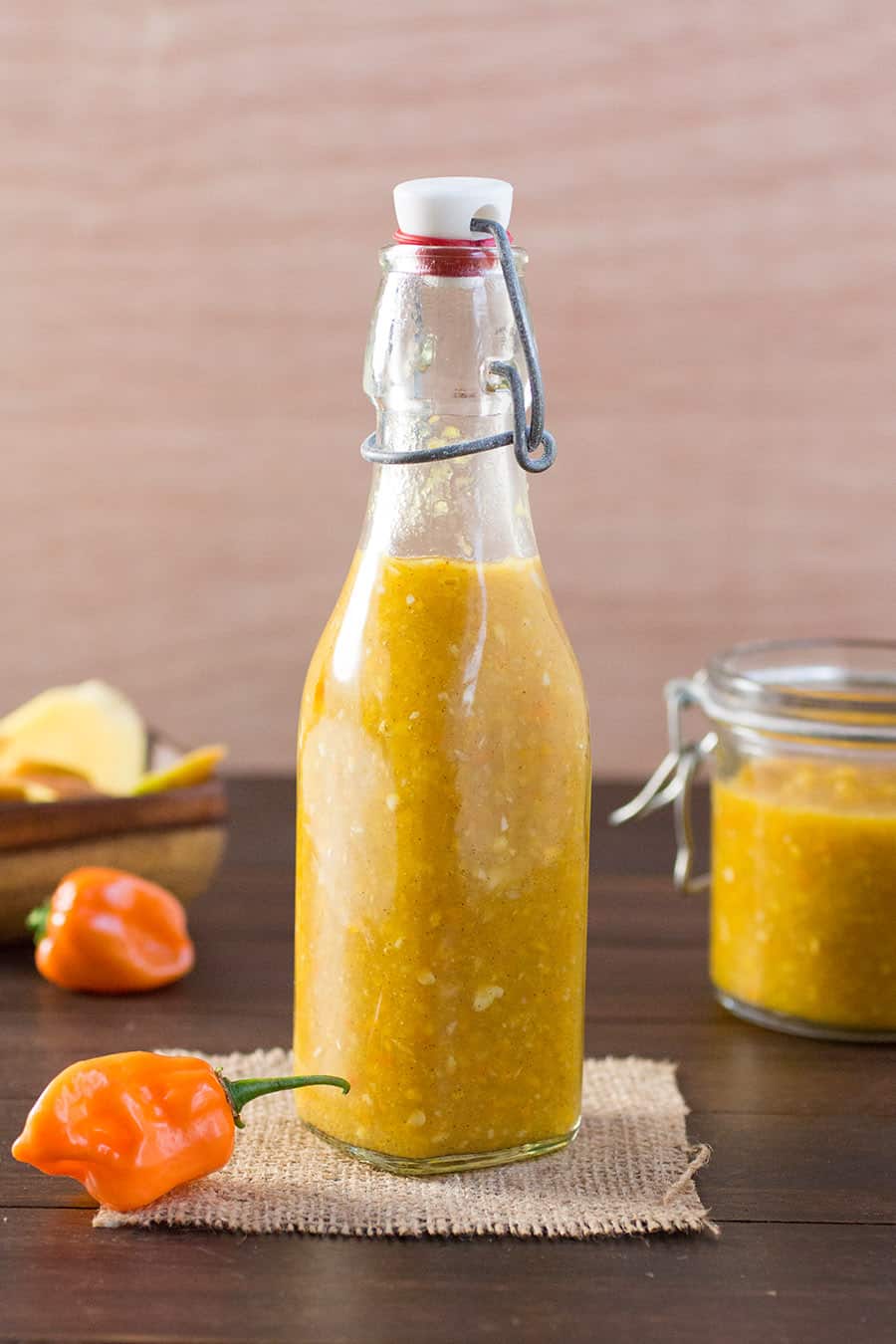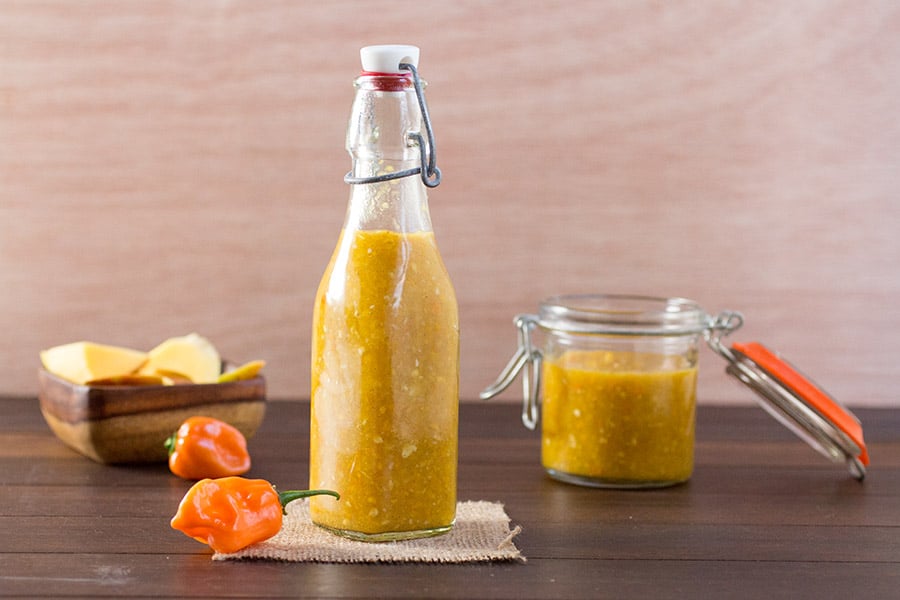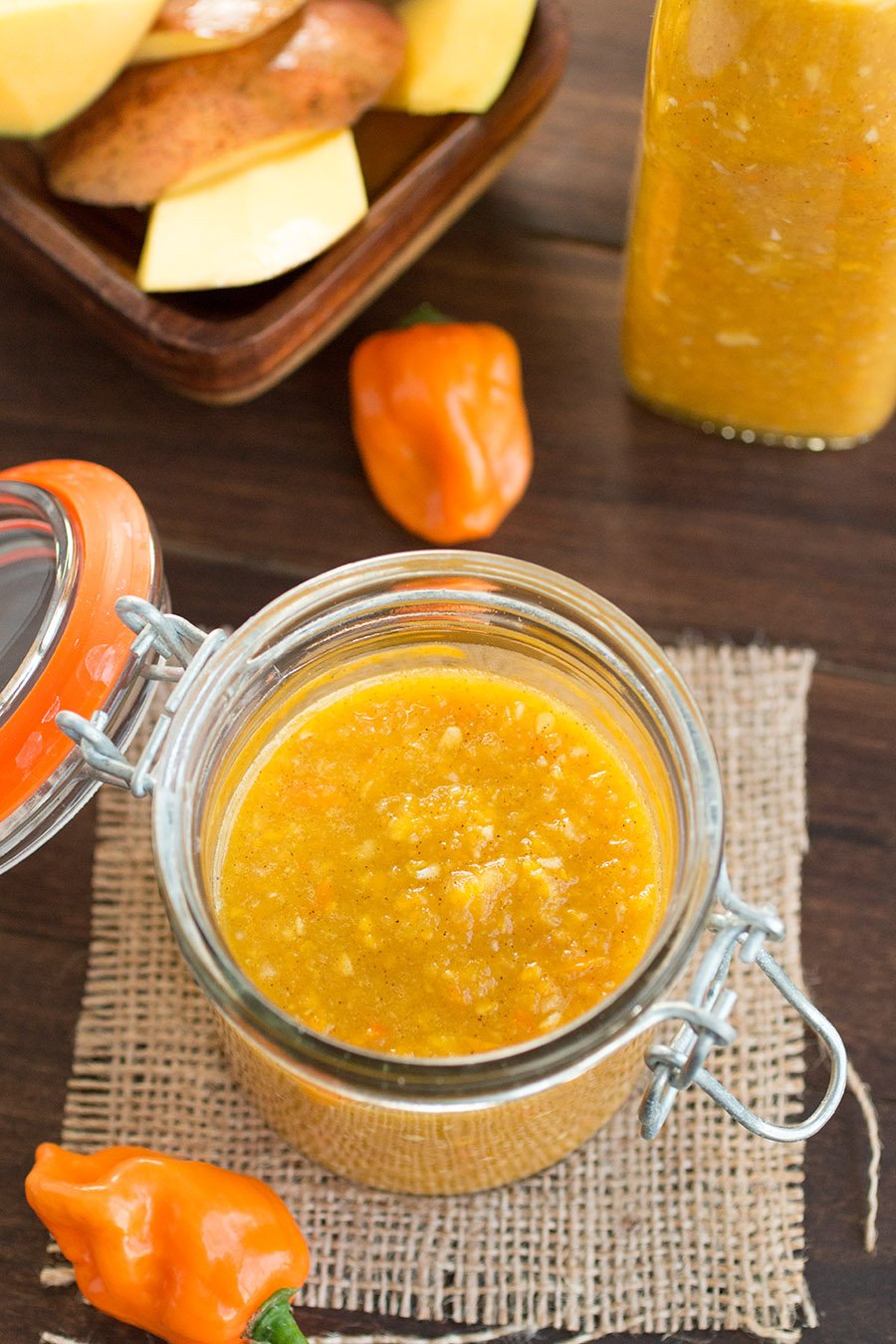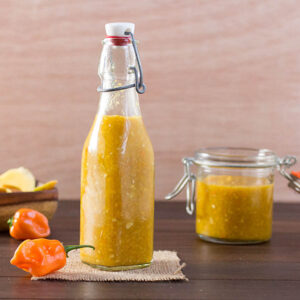If you try this recipe, please let us know! Leave a comment, rate it and tag a photo #ChiliPepperMadness on Instagram so we can take a look. I always love to see all of your spicy inspirations. Thanks! – Mike H. Guess I’ll have to run out and buy another mango. No worries about the habanero peppers, though, because our habanero plants are producing like crazy now! BIG WIN! Throwing my hands in the air and dancing sort of win. Bragging about my garden again, my friends, so please excuse me. I can’t help it. I get so happy this time of year with all the fresh produce, particularly chili peppers, popping out of the garden. It is quite delicious and you’ll need to make a couple extra batches, methinks. Do you hear it? Hot sauce talks to me more than fresh produce. All those voices collected into a single bottle, singing together. Hot sauces are an ideal way to use up your garden ingredients. Round out the body and flavor of the hot sauce with garlic and onion, then flavor it up with a medly of seasonings, including allspice, ginger, cumin and sweet honey. And tangy apple cider vinegar, of course. Or, strain it and discard some of the solids. You can serve this on pretty much anything, but for me it’s ideal over pork, chicken or seafood, particularly shrimp or white fish. Or PORK! Just the other day I whipped up some quick pulled pork tacos for lunch with diced tomatoes and used this hot sauce to smother them. We didn’t need anything else. We have a video of the recipe below so you can see how it is made. Time to get cooking! Bring on the hot sauce! Check out my other Hot Sauce Recipes, too. To be technical, target level ph for shelf stable foods is below 4.6 ph, but should probably be lower for home cooks, around 4.0 or so, to account for errors. If you’re concerned, add more vinegar to lower the ph. Sauces made with fermented chili peppers will last even longer. The best ph meters that I recommend are from Thermoworks. Get yourself a ph meter from Thermoworks today. I am a happy affiliate.




